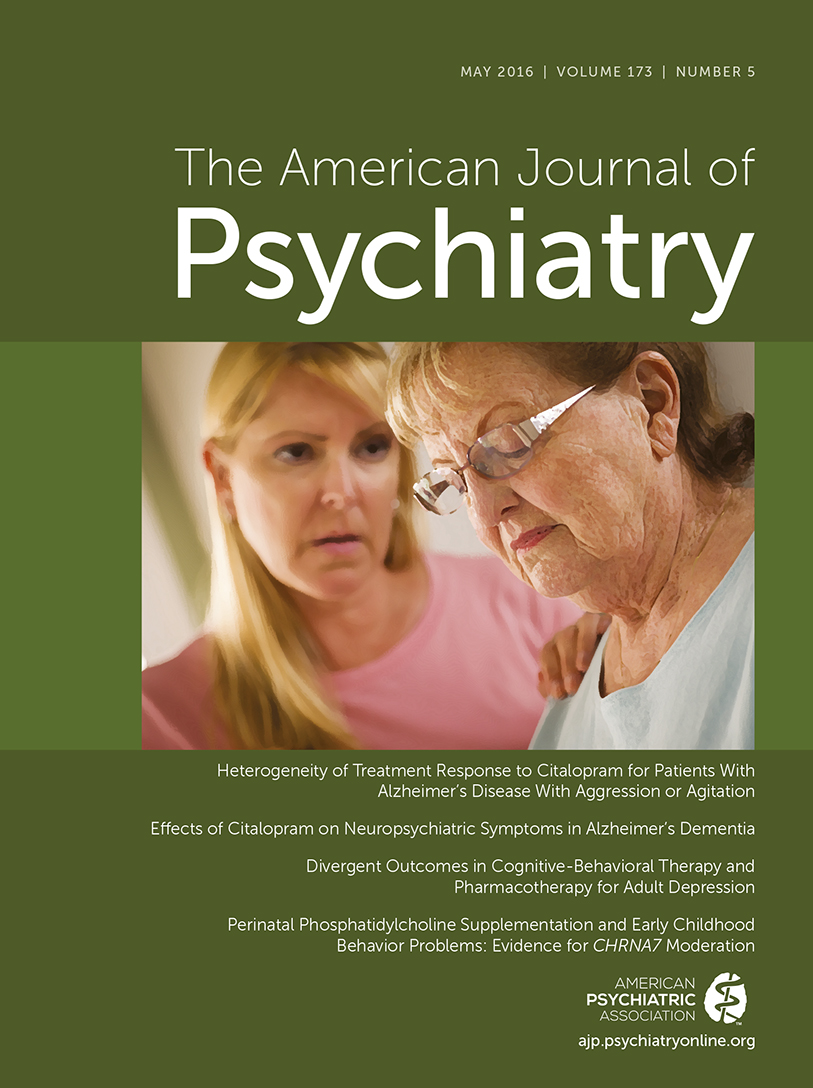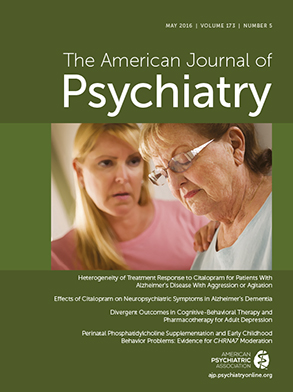In 1979, as I entered medical school to find the cause of psychosis, this journal was reviewing a report by Ralph Wharton on the “accidental treatment of thyrotoxicosis as mania” (
1). Both my career and this report were motivated by the enigmatic illness of a brilliant young woman, my sister Eileen.
The onset of psychosis in a young person terrifies, consumes, and confounds the family. Almost always, as in my experience, there is no family history of severe mental illness or personal experience with psychotic individuals.
Eileen’s perception that she could hear our neighbors commenting on her behavior through the walls or that helicopters were flying overhead to monitor her conversations blindsided us. Of course, the ensuing hours and days of conversations that we had with Eileen could not dissuade her from these hallucinations and delusions. Moreover, she stopped eating and sleeping and was agitated and terrified and then combative. She was admitted to a local hospital and diagnosed with schizophrenia. When told that Eileen would never be well and should be institutionalized, my mother, an army nurse, immediately arranged to have her discharged against medical advice, and my mother designed her own treatment plan. I know all too well the acute trauma that family members experience at the onset of a psychosis in a child. I now also understand their denial and the potential for displaced anger at treatment teams. Skillful clinicians can manage this circumstance, but in those days the family was viewed as the causative agent and not as an ally for the patient’s recovery.
Eileen did not follow through on the full college scholarships she had earned to Clark or Colgate, but instead entered Rutgers, closer to home. Surprisingly, she did not miss an academic beat between her high school graduation and college entrance the next fall, but, oh, what a summer it was! In these months my own life and trajectory were permanently transformed. Not more so than Eileen’s, however. She would eventually graduate from college but experience another dozen hospitalizations along the way, each involving very severe symptoms, massive family efforts to get her to safety, and more and more bafflement about the disease. At each improvement we convinced ourselves the illness had ended, only to have the roller coaster ride begin again.
Family sessions emphasized my mother’s role in producing Eileen’s illness, in keeping with the theories of the day. My dear mother’s ensuing guilt and despair consumed her spirit and the astounding resilience she had displayed against the substantial hardships in her own life. My father withdrew as well, his war-related PTSD left him incapable of managing this family-based trauma, and I was left to step up to the task as best I could.
A turning point in all these events was the recognition that her episodes were accompanied by thyroid storms and that she had Graves’ disease. She was transferred to a special unit at Columbia Presbyterian Medical Center and made an excellent recovery, as described in Wharton’s case report (
1). The psychiatric team predicted that she would be cured through careful endocrine management.
This was sadly not the case, and the hope for a quick medical cure soon faded. I decided to devote my career to this cause, leaving a pharmaceutical research position to go to medical school. I eventually completed my psychiatry residency at Columbia University, beginning my training on that same special unit where Eileen had been treated.
For many years I considered her autoimmune thyroid disease to be a red herring, an unfortunate coincidence and just more bad luck for Eileen. Her clinical diagnoses swung through the typical suspects for psychosis: from schizophrenia to bipolar disorder, to schizoaffective disorder, and back again.
She did eventually achieve a full remission on a combination of lithium and clozapine. For a whole decade she enjoyed health and happiness until her lurking immune condition again got the better of her. She rapidly plummeted into acute idiopathic renal failure. A successful kidney transplant followed, but clinical caution prevented the implementation of her previously successful treatment regimen, and her rocky course resumed.
I have wrestled with the possibility that each putative etiological pathway that has been associated with psychosis might underlie Eileen’s condition. As a scientist I have enlightened myself about most of them and investigated a surprising number of the pathways myself. I am left thinking that the association of her particular disease with an autoimmune thyroid condition, as described in this journal by Ralph Wharton (
1), offered the best clue.
The psychoses are enigmatic and heterogeneous. We are now looking forward to person-specific cures, and abnormalities in immune activation should soon be measurable targets for treating psychiatric diseases. I hope this will be true in Eileen’s lifetime.

